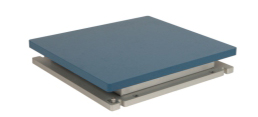Robotic systems and neuroprostheses after spinal cord injury
The Center for Neuroprosthetics and Brain Mind Insitute is developing robotic systems and neuroprostheses to improve the recovery of locomotion after spinal cord injury.
These technologies operate in real-time through closed-loop control policies, and are thus contingent on a biofeedback signal to configure their operations. For this purpose, they have been using the VICON system, which allowed the research group to detect the ongoing movements of the legs and evaluate the locomotor performance with short latencies. They implemented these closed-loop control systems in both rats and humans with the same reliability. For example, the group showed that real-time control of the location and timing of electrical spinal cord stimulation restored locomotion in paralyzed rats. A clinical study using the same principles is ongoing at the university hospital in Lausanne.



